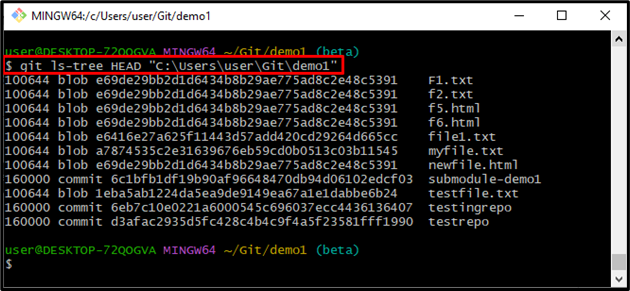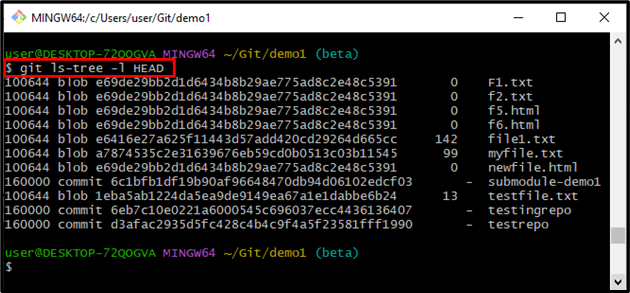This guide will discuss:
What is “git ls-tree” Documentation in Git?
In Git, the “git ls-tree” command permits the users to list the contents of a tree object. It can be used to show the names and modes of each entry in a tree, with the blob or tree identifier. The “git ls-tree” command examines the contents of a tree object at a particular commit.
Syntax
Here is the basic syntax to use the “git ls-tree” command in Git:
In the above code snippet, the mentioned command takes the following parameters:
- “<commit>”: It is used to determine the commit from which the user wants to list the tree contents. It can be a branch name, commit hash, or any other valid Git reference.
- “<path>”: (optional): It indicates the path within the tree for listing the contents. The “git ls-tree” will show only the entries within the specified path.
Furthermore, the above-stated command supports the following options:
- “-t” or “–tree” displays the type of each entry, blob, or tree.
- “-r” or “–recursive” will recursively list the data of tree objects, including subdirectories and modules.
- “-z” is used to display the outputs of the entries separated by null characters instead of newlines. This option is useful for parsing the output programmatically.
- “-l” or “–long” option shows the entire object name and the size of each blob entry.
How to Use the “git ls-tree” Command in Git?
To use the “git ls-tree” command in Git, check out the following example.
Example 1: List Content of Root Tree
In the Git root directory, utilize the “git ls-tree” command along with the “HEAD” or a specific commit. It will list the content of the root tree in the specific commit Head:
Example 2: List the Content by Specifying the Path
First, navigate to your preferred repository with the help of the “cd” command:
Then, execute the below-mentioned command along with the path of the stated repository to list the content of a specific directory within a commit:
The resultant image shows that all blobs have been listed in a single commit:
Example 3: List Content With Size
The “-l” option along with the “git ls-tree” command can be used for listing the content of a commit along with the type and size of each entry:
The below-stated output indicates that the data has been listed successfully with the size of each entry:
That’s all about the “git ls-tree” documentation.
Conclusion
The “git ls-tree” command permits Git users to enlist the data/content of a tree object. It can be used to show the names and modes of each entry in a tree, with the blob or tree identifier. This post explained the method for utilizing the “git ls-tree” documentation in Git.



